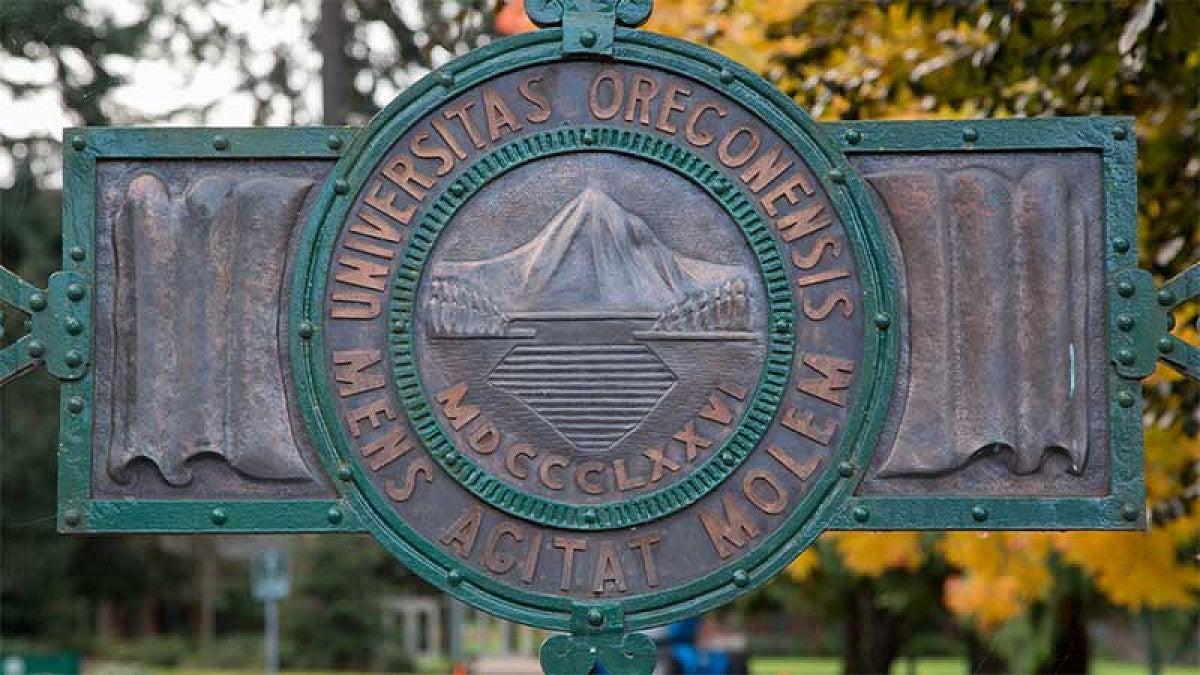The Board of Trustees of the University of Oregon voted at its spring meeting to adopt an undergraduate resident tuition rate structure indexed to the level of state funding for higher education.
Under this structure, if the state provides an additional $120 million to the state’s seven public universities for the 2019-21 biennium, the UO’s resident tuition increase would be 4.45 percent. If the state provides less, the percentage of tuition increase would be higher, up to a maximum of 9.68 percent.
The structure was proposed by President Michael H. Schill, based on a recommendation by the Tuition and Fee Advisory Board. The recommendations also include setting aside additional need-based aid of up to $350,000 based on the level state funding. The state Legislature is expected to determine its budget sometime in June.
The trustees voted after listening to two hours of public comment filled with impassioned testimony from students, faculty members and staff who are concerned about the effect of tuition increases on students and budget cuts on university programs.
“I don’t want to increase our tuition by nearly 10 percent and I know you don’t won’t to increase our tuition by nearly 10 percent,” Schill said to trustees. “We need to redouble our efforts to get the state Legislature to increase our funding.”
Several trustees made comments before the vote echoing that sentiment and imploring the state to provide the UO a more reasonable share of overall public university funding.
“This is not a choice I enjoy, but it’s our fiduciary responsibility to make choices in the best interest of the university, and it’s hard to say that because the university is our students,” said board member Andrew Colas. “I deeply care about the students here, and love this university, and we need to continue to push at the state level that we need to get our fair share of funding as a university of our size.”
Jamie Moffitt, vice president for finance and administration and chief financial officer, reminded the board of the university’s budget situation, including a budget gap that widened from a projected $7.9 million at the end of the second quarter to approximately $10.7 million at the end of the third quarter.
Moffitt also noted that the Tuition and Fee Advisory Board, which is made up of made up of students, administrators, faculty members and staff, based its tuition recommendations on feedback from 15 meetings and forums held since the start of the year.
Before casting their votes, several board members noted the difficult situation facing the university because of the budget gap, including significant cost increases related to personnel that are outside of the university’s control.
The board approved the motion by a vote of 11-1 with William Paustian, the student representative on the panel, providing the dissenting vote.
Also related to the budget, at Wednesday’s Executive and Audit Committee Moffitt highlighted the various cost-cutting measures the university has undertaken. Since fiscal year 2017, thanks to new cost savings initiatives and budget cuts among other efficiencies, the university has realized total savings of $19.5 million in one-time costs and $29.5 million in recurring costs.
The board also voted to approve preliminary funding to cover design development and site preparation for a housing transformation plan that will replace Hamilton and Walton halls with new residence halls along with a visitors’ center. Work would begin this summer. The first phase of the three-phase project would open in 2021.
Funding for the projects comes ultimately from housing fees. Enrollment management staff said the projects will help the university meet its enrollment growth targets, which are part of the its long-term sustainable financial plan.
The trustees also unanimously approved the addition of a doctoral program in planning and public affairs. Rich Margerum, professor and head of the School of Planning, Public Policy and Management in the College of Design.
Earth sciences professor Doug Toomey gave a presentation on “ShakeAlert, ALERTWildfire and the Emerging Internet of (Wild) Things,” regional efforts around the early detection of earthquakes and wildfire. The university is a major contributor to the effort, and Toomey has received regional and national recognition for his work, which places the UO on the leading edge of new emergency services and environmental science research.
Tim Nesbitt, interim deputy director of PERS Solutions for Public Services, and John Tapogna, president and partner of the ECONorthwest economic research and consulting firm, provided an in-depth view into the costs and effects of the Public Employees Retirement System. PERS remains a dramatic cost driver for the UO, and trustees engaged in a discussion with the presenters about how various possible solutions might help mitigate the financial impact on the UO and its students.
Schill took time to acknowledge Provost and Senior Vice President Jayanth Banavar, who will be stepping down from his post this summer but who will remain on the faculty in the physics department.
Board Chair Chuck Lillis also publicly thanked Paustian, who will be graduating this spring, for his four years of service on the board.
The board’s next set of regular meetings is scheduled to take place Sept. 5-6. More information on this quarter’s meetings and related materials are available on the board’s website.


